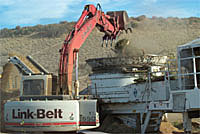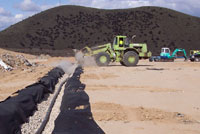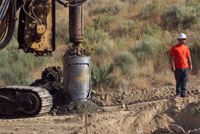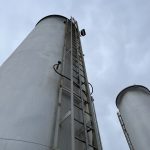
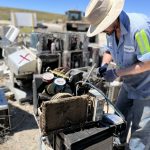

Our landfill is filling fast. In FY2021 we projected that we would receive 435,576 tons of trash. Instead, we received 535,795 tons! The current North Ravine Cell, our active landfill, was engineered to last 100 years. With current growth in Ada County, we’ll be lucky if it lasts 60 years. Please learn more about separating your trash, recycling, reusing, and diversion.
- The Ada County Landfill is an enterprise fund and does not receive any tax dollars. Its revenue comes from user fees.
- You can bring all your hazardous materials…paints, pesticides, fertilizers, cleansers, etc. to the landfill’s Household Hazardous Waste Facility on Fridays and Saturdays at no cost.
- Household Hazardous Waste program offers a reuse program. Since many of the materials brought to the HHW Facility are still usable, you can take up to 4 items at no charge.
- You can bring unwanted television sets and computer monitors to the landfill at no charge. Please go through the scale house to the Recovery and Diversion Area.
- Each year, the waste that decomposes in the landfill, creating Landfill Gas (LFG), produces enough energy to power 3,000 homes through Ada County’s Landfill-Gas to Energy program.
- One of the largest recycling programs in Idaho is run by the Ada County Landfill, contracting with Timber Creek Recycling. It’s the county’s wood waste program, reclaiming around 150,000 cubic yards of waste each year.
- All household and “small quantity generator” business hazardous waste is processed through the Household Hazardous Waste Facility.
- The EPA requires that Ada County monitor and inspect the landfill for at least 30 years after its closure.
- In 1999, Ada County’s Hazardous Material Collection Program received national recognition by being selected as the “Best New Collection Program at the Local Level” by the North America Hazardous Material Management Association (NAHMMA).
- On average the Ada County Landfill accepts over 400,000 tons of ordinary waste every year that’s over one ton per person per year!
- On average the landfill diverts 182,464 pounds of E-Waste per year.
- From voluntary drop off, the Ada County Landfill Recovery and Diversion Area processes, on average, 588,535 pounds of metal per year.
- On average there are approximately 4,500 tires diverted from the landfill every year.
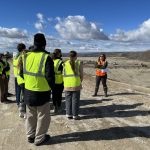


Are you curious about how a modern landfill is engineered and operated? Do you want to know more about landfill gas to energy projects? Do you want to know more about recycling and diversion?
We offer tours to civic, school, church, or scouting groups interested in what happens at the Landfill.
Contact us to set up an informative tour of the Ada County Landfill and Household Hazardous Waste Facility. Come see what happens to your trash. You might be surprised.
Tours must be scheduled in advance. Groups of more than 4 people must provide their own transportation on the tour. Visitors must arrive on time and stay with the group for the entire tour. Most tours last approximately 1.5 hours but accommodations can be made.
Schedule a Tour
To arrange a tour of the Ada County Landfill and the Household Hazardous Waste Facility, contact:
Education and Outreach Manager: 208-577-4790
[email protected]
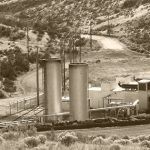

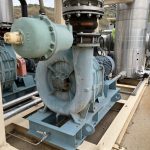
Landfills are one of the top producers of methane gas, a significant greenhouse gas. At the Ada County Landfill we are actively engaged in projects that capture landfill gas (including methane), a naturally occurring byproduct of trash decomposition. Modern landfills, such as our North Ravine Cell, are engineered to maximize gas extraction through a network of horizontal and vertical gas lines and wells.
Once collected, landfill gas can be sold and used for energy. Currently, the captured gases from the landfill are being processed to generate electricity. Landfill gas that comes from the Ada County Landfill produces enough electricity to power nearly 3,000 homes for one year and generates a revenue stream of approximately $272,000 per year.
In the near future, in collaboration with LFG Development, the landfill gas will be processed through a thermal oxidizer to create Renewable Natural Gas that can be used as fuel in your kitchen stove or water heater. It is also used to power city buses and garbage trucks.
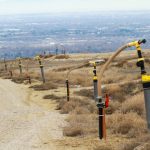
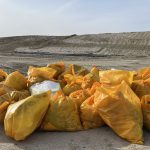
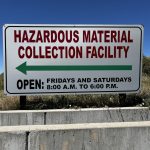
Environmental responsibility of the Landfill is mandated by the Environmental Protection Agency (EPA) and by Idaho State Law. However, the environmental impact of the landfill is a social responsibility for all of us.
The EPA requires that Ada County monitor and inspect the landfill for 30 years after its closure. Along with constant emissions monitoring, Ada County makes a conscious decision to divert as much waste from the landfill as possible. With waste diversion programs, such as wood recycling, e-waste recycling, and the Household Hazardous Waste Facility’s Material Reuse Program the items that are diverted from the landfill can be repurposed and valuable landfill airspace is saved. By taking these steps to extend the life of the landfill we ensure that the environmental future of Ada County is secured.
At the Ada County Landfill we have an Environmental Compliance team that carefully monitors all emissions from the landfill that could negatively impact the groundwater, local lands, or air. We also have skilled teams of Heavy Equipment Operators and Landfill Techs who carry out daily operations. Ongoing projects include:
- Impermeable liners to capture liquids that come in contact with trash (otherwise known as leachate)
- Network of pipes and wells to capture Landfill Gas
- LFG to Energy program including flares that burn off excess gas 24/7, keeping it out of the atmosphere
- Sheriff Labor Detail crew to collect flyaway garbage
- Topsoil preservation for final capping off of landfill so that it can be reseeded with native plants
- Odor App for neighborhood odor reporting
- Reuse and Recycling programs including: wood chipping of tree limbs and clean lumber, Household Hazardous Waste Reuse program, tire chipping for reuse, and metal recycling
- On-site Household Hazardous Waste Facility and mobile collection units throughout the community to properly handle liquids and hazards that cannot go into the landfill
- Full fleet of heavy equipment to manage trash, leveling and compacting it to maximize landfill airspace- the space a landfill takes up measured in cubic yardage
- Educated team of scale house employees to direct folks to proper areas for deposit
- Employees dedicated to managing a modern landfill with state-of-the-art technology and cutting edge practices


